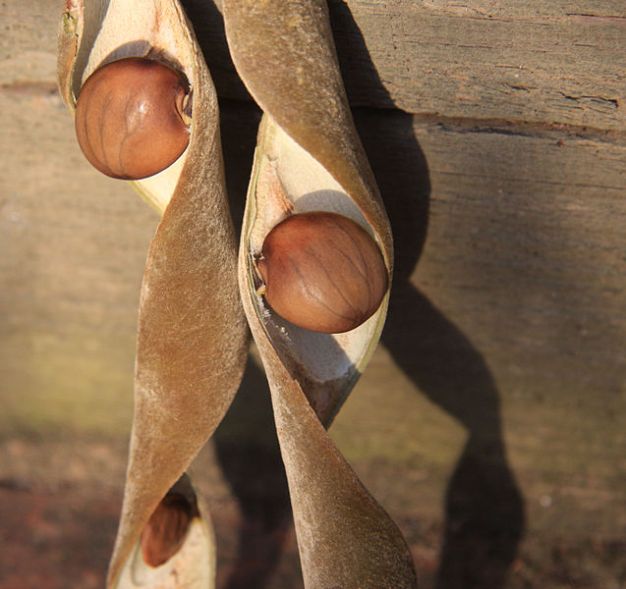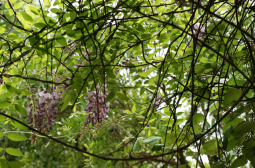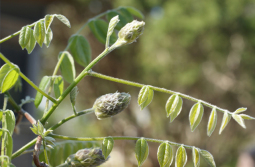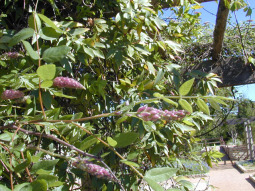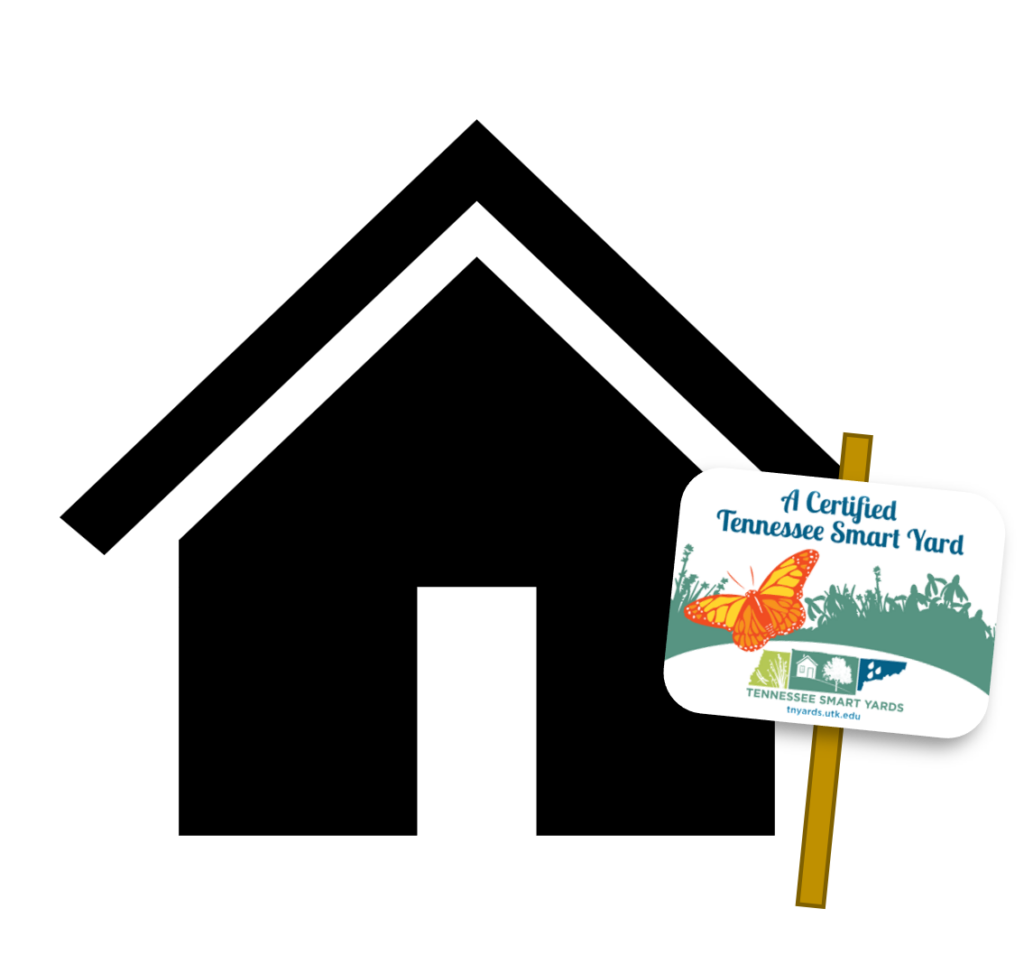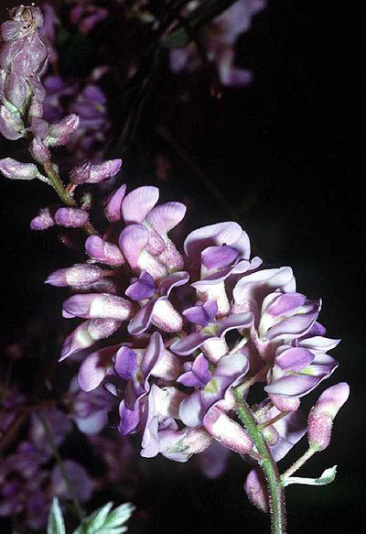
Common Name: American Wisteria
Full to part sun; moderately wet to medium moisture level; best in moderately fertile loam but tolerates sandy, sandy loam, medium loam, clay loam and clay soils; slightly acid to neutral pH.
15-30 feet height x 4-8 feet spread; blooms May and June; lilac or purplish blue flowers; 2-4 inch long, knobby seedpods.
Growth Rate: Fast
Maintenance: Susceptible to a number of foliage-chewing insects and fungal diseases but none are significant. Plants continually send up shoots from the base, which need to be routinely removed, otherwise turning into a messy tangle. Requires little other care aside from light shaping in summer and a little thinning in winter.
Propagation: Can propagate by seed or softwood cuttings. Cuttings are preferred because it can take years to bloom from seed.
Native Region: West Tennessee, lightly elsewhere
Vigorous, long-lived vine with shiny, dark green leaves, each leaf bearing 9-10 leaflets. Flowers are in large, drooping clusters 6-9 inches long. Individual flowers are nearly 1 inch long. Flowers come in several waves over a 2-4 week period. Much preferred and much less aggressive than the insidious Chinese wisteria (W. sinensis). Full sun needed for best flowering, and too rich a soil results in too much leaf growth. Develops a thick, coiled trunk that requires sturdy support. Do not use on a chain-link fence where stems will become hopelessly tangled and nearly impossible to remove. Important butterfly larval food.
